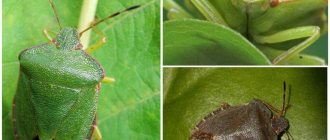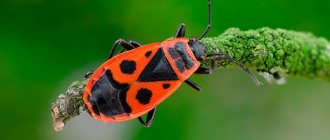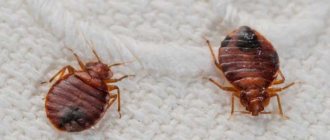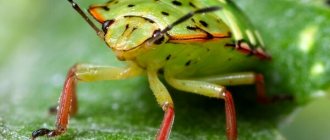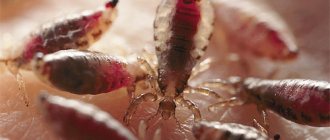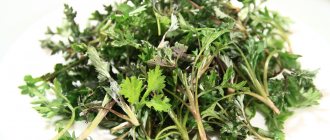The common ground bug is a bug belonging to the suborder Pentatomomorpha. These are small insects that feed on plant sap. Today, more than four thousand species with a wide habitat are known. Insects survive the cold season in adult stages (with rare exceptions in the larval stage). Often lead to the death of plants. In the European part there are about four hundred species and subspecies of terrestrials. Insects have a characteristic specific odor. The reason for this is the presence of glands that secrete cymitic acid.
In nature, there are many species of animals and insects that cause serious damage to agricultural and garden plants. According to official statistics, about twenty percent of crops around the world are destroyed annually from their vital activity. Garden bugs are widespread throughout the globe. They have sucking type mouthparts and are adapted to feeding primarily on liquid food (carnivorous species are less common). Insects damage the stems and foliage of plants, on which characteristic brown spots appear. Methods for killing insects depend on their type and the structure of their mouthparts. These may be internal chemicals that enter the digestive tract along with plant sap. In the fight against bedbugs, external insecticides are most often used. They penetrate the insect’s body through the chitinous membrane and respiratory organs.
Garden bugs
Bedbugs are insects with a characteristic odor, whose vital activity harms garden crops and also reduces the quality of life of mammals and humans. Red bugs (garden bugs) feed on plant sap, which can lead to the death of immature shoots. This order of hemiptera has glands that produce cimycin acid, which repels birds. Insects reproduce quickly and easily adapt to extreme environmental conditions.
The common ground bug is a family of bugs distinguished by its characteristic color (black-red or black-yellow) and body shape. The size varies from one to 12 millimeters. Distributed throughout the world. Adults and larvae of the bug feed mainly on cruciferous vegetables (cabbage, radish, and others). In this case, insects damage the skin of the plant, and yellowish spots remain on the leaves. Bedbug eggs are protected by a chitinous shell and are bright red in color. The mounted groundling feeds with the help of a piercing-sucking proboscis located in the lower part of the head. There are also several similar species in nature. For example, bugs of the family Lygaeida, unlike the land bug, are capable of flight. The wings have membranes. The sides and chest are black.
As a rule, with the onset of warm weather (late April early May), the common ground terrestrial begins to gather in large colonies and actively reproduce. Clusters of insects can be seen on garden plants, as well as on smoldering stumps and fences. This is explained by the fact that insects survive the winter season in the adult stage, hiding under fallen leaves and tree bark.
During the breeding season, females lay eggs on the lower surface of the leaves. The cycle of transformation into an adult is about thirty days. In this case, the larvae experience five molts, constantly changing color. Of the four hundred eggs laid, less than half turn into adult insects. This is due to the fact that not all larvae are able to emerge from the hard chitinous shell, which performs a protective function. The larvae of the ground beetle are capable of destroying young, immature shoots, so in case of large numbers it is necessary to chemically treat the crops.
There are several main signs by which affected plants are identified. For example, flower petals fall off almost immediately after they appear. Some of them don't even have time to bloom. If the leaves of ripe cruciferous fruits begin to curl, this also indicates the vital activity of the terrestrial plant. The destruction of the population, as a rule, is carried out in early spring, before the insects have entered the stage of active reproduction. If infection cannot be avoided, plants are treated with special preparations (such as Bankol). It should be noted that red bug bites are safe for human health and do not cause pain.
Types of useful bugs for the garden
Summer residents, owners of greenhouse farms, and workers at agricultural enterprises most often encounter stink bugs or stink bugs.
Shield insects can be divided into 3 categories:
- Herbivores (phytophages). They feed on leaves, young shoots, fruits of agricultural crops and other plants.
- Predatory. They eat harmful insects regardless of the stage of development (eggs, larvae, nymphs, adults). But in conditions of insufficient food, they can consume pollen and plant sap.
- Harmless. They prefer plant seeds and the remains of invertebrate animals. They do not pose a threat to agricultural land as long as the population size remains within normal limits. A striking example of harmless species is black and red soldier bugs.
All shield insects have a piercing-sucking mouthparts adapted for piercing a food source and sucking out liquid.
Among the large family of garden bugs, there are several predatory species that feed on the adults and larvae of agricultural pests.
Some greenhouse farms specifically breed these insects to use them against aphids, whiteflies, spider mites, and thrips:
- Perillus two centuries old. Representatives of the species are easily identified by a characteristic pattern of two triangles located near the head. On the territory of Russia they are found only in the Krasnodar Territory; they do not survive in regions with harsh winters. Adults are bright red and black in color. The stink bug effectively destroys egg clutches and eats larvae, adult beetles and butterflies. The basis of the diet of perillus are Colorado potato beetles, leaf beetles, and sawflies.
- Picromerus. The bug is brownish-brown in color with a bronze tint. The menu of this omnivorous shield insect includes up to 250 species of insects that harm agriculture. Picromerus is a useful bug for the garden.
- Macrolophus. This light green polyphagous bug destroys many parasites occupying flower beds and beds with cultivated plants. It prefers to feed on greenhouse and tobacco whiteflies, thrips, and tomato leafminers.
- Podizus. Adult bedbugs are gray-brown in color. Their body length does not exceed 1.2-1.4 cm. The insect’s diet includes about 90 species of lepidopteran and coleopteran pests. One Podiusus larva, depending on the stage of development, is capable of destroying from 5 to 12 Colorado potato beetle larvae, and a pair of adult individuals can destroy up to 200 larvae.
What does a wood bug look like?
The green tree bug has a sharp and long proboscis, with the help of which it obtains food for itself. Its body has a characteristic structure - a wide and thick shell, like a shield. Because of it, the insect is sometimes called a stink bug. The color of the shell is bright green or dirty brown with red splashes. The development period of the green bug lasts more than a week. A durable shield-shell made of chitin helps the insect fight external influences. The molting period - when the stink bug sheds its old shell - is a dangerous time. If the bug does not have time to get out of its tight shell, it dies. In the photo, these insects look harmless, but their disgusting characteristic smell when met in person leaves a less favorable impression.
Is the wood bug harmful?
- The insect can eat crops;
- The pronounced unpleasant smell of a bug can ruin the taste of berries or any other fruit after interacting with it;
- It poses no threat to human habitation, other than being aesthetically unsightly.
Sometimes there are invasions of these insects on garden plots, as a result of which a significant part of the crops or plantings perishes, and the wood also deteriorates.
Why is the soldier bug harmful?
Soldier bugs are far from harmless animals, as is commonly believed. They feed not only on seeds and remains of dead insects. Pests suck the juice from young shoots, leaves, and fruits, causing great damage to garden crops.
Damage caused by firebugs:
- they like to suck the juice from grape fruits, as a result, the yield of the bushes is significantly reduced. Damaged berries become unsuitable for food;
- The insect's proboscis is quite powerful, so it can pierce hard seeds and thick shoots. The plant from which bugs suck out beneficial juices gradually stops blooming, bearing fruit and dies;
- affects tree trunks and branches;
- damages cabbage and beet leaves, leaving small punctures on them;
- destroy seeds sown in the soil;
- are dangerous pests for emerging seedlings. The bugs suck out the nutritious juice, causing the sprouts to dry out.
Fire bugs cause harm when there are a lot of them
A large colony of insects can cause significant damage to summer cottages, farms and vineyards.
How to identify a wood bug
It differs from other insects in two ways:
- pentagonal body shape;
- inability to fly, despite having wings.
Tree bugs are named so due to their main habitat - on trees and bushes. In winter, stink bugs are usually not found, as they are in a state of hibernation. They rarely get into apartments; they are usually brought from the garden or market along with fruits and flowers.
The stink bug differs from other insects by its specific smell, which is difficult to confuse.
Family Predators
The largest family of bedbugs in terms of number of species (about 7,000, including about 80 species in the territory of the former USSR) live all over the world. Mostly large insects, mostly gray, stormy, dark colors (there are also bright representatives). They live everywhere: in grass, on trees, in bushes, under stones, in animal burrows and human buildings. Some species live with humans and hunt synanthropic insects. They are predominantly nocturnal, predators, feed on insects, some tropical species feed on the blood of humans and animals (they are a transitional species from predators to parasites). Among the Predators, the subfamily of Triatomine bugs (killer bugs, kissing bugs, about 130 species) stands out, causing severe Chagas disease. This disease is found only in Latin America and is fatal in most cases. More people died from this disease than from other parasitic diseases (including malaria). Triatomine bugs carry Trypanosome parasites, which live in human blood. Some representatives of the Predators:
The dirty predator is a large bug with a body length of almost 2 cm, brown in color with reddish legs. This species feeds on other insects and invertebrates and can live in human homes.
Ptilocnemus lemur is a predatory bug that preys on large black bulldog ants. These insects kill ants by piercing them with their proboscis.
Triatoma infestans (kissing bug) is a bug of the Triatomidae subfamily and is one of the carriers of Chagas disease. A blood-sucking insect common in Bolivia, Argentina, Uruguay, Paraguay, Chile, Brazil and Peru. Can live in old human buildings.
Nagusta goedelii is a bug with a body length of about 12-16 cm, an Eastern Mediterranean species, lives in the Crimea, Transcarpathia, the North Caucasus, and is common in Transcaucasia, Turkey, and Iran. The bug lives in the crowns of trees, less often in bushes. When in danger, the insect freezes and becomes like a wrinkled leaf.
Predator is dirty
Ptilocnemus lemur
Triatoma infestans
Nagusta goedelii
Coranus contrarius
Empicoris culiciformis
Peirates hybridus
Phymata crassipes
Phymata erosa
Rhynocoris punctiventris
Sycanus collaris
Sycanus croceovittatus
Reasons for the appearance of wood bugs in the house
Living quarters are not the most comfortable habitat for shield bugs. They usually end up in an apartment by accident in single copies. A massive invasion is possible if there are plants on which they live under the window of the house. In the event of a sudden change in weather (cold temperatures, extreme heat or wind), they may seek more comfortable conditions and move to an apartment.
In a village house, invasions occur more often, but for a city apartment such phenomena are atypical.
Can shield bugs breed in an apartment?
An apartment or other type of human habitation does not attract stink bugs as a breeding site and permanent habitat. There is no power source for them here.
Despite their name, they do not feed on wood, chew furniture, or threaten wood products.
The usual breeding site is the underside of the leaf on which eggs are laid.
Family Horseflies
Horseflies (Miridae) are a family of small and medium-sized bugs with a body length of 2-11 mm. There are about 10,000 species of these insects. The body is quite soft, almost round or almost elongated. Most species are herbivorous, but there are species with mixed diets and predators. Many horseflies are agricultural pests and pests of ornamental crops. Horseflies prefer to lead a secretive lifestyle. They lay eggs in plants, thereby harming them, and also feed on their sap, and inject poisonous toxins into the plant tissue, which lead to the death of part of the plant. Contact us to exterminate horseflies.
Adelphocoris quadripunctatus
Adelphocoris seticornis
Apolygus spinolae
Capsodes gothicus
Cyllecoris histrionius
Deraeocoris rutilus
Dryophilocoris flavoquadrimaculatus
Heterocordylus tumidicornis
Leptopterna dolabrata
Megacoelum infusum
Miris striatus
Notostira elongata
Oncotylus sp.
Piezocranum simulans
Poecilocapsus lineatus
Rhabdomiris striatellus
Stenodema laevigata
Strongylocoris leucocephalus
How to get rid of a wood bug
It is not difficult to get rid of stink bugs in an apartment if they are present in single copies. You can simply collect them and throw them out the window or flush them down the toilet.
